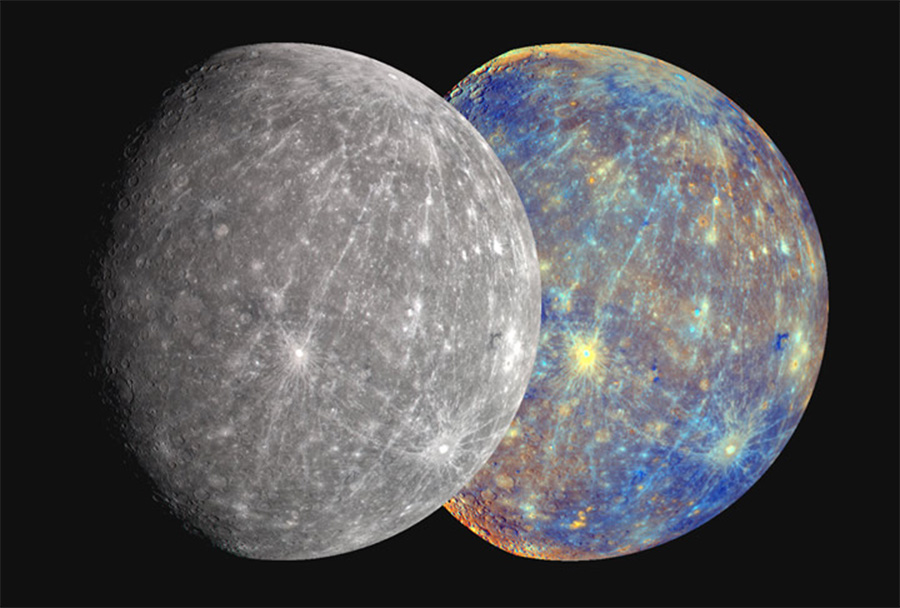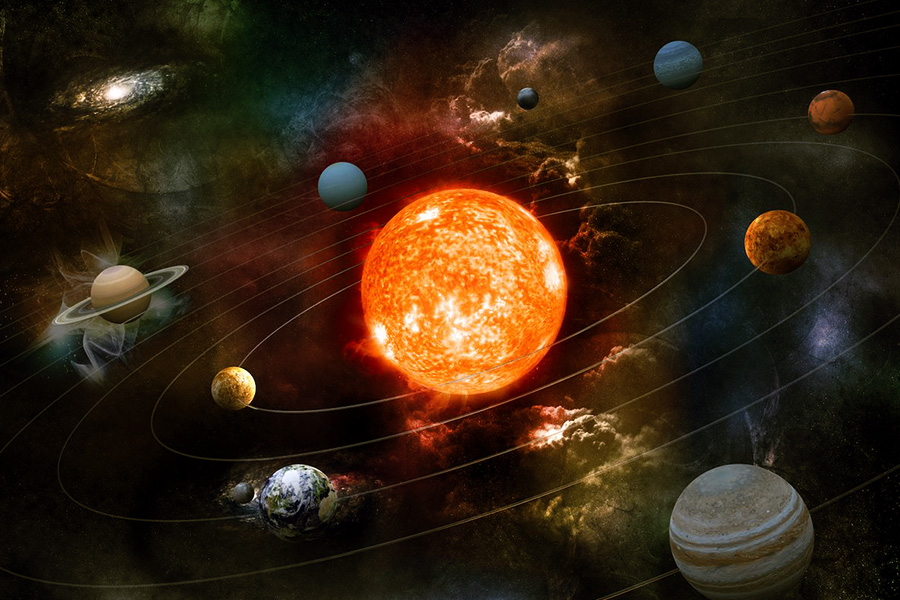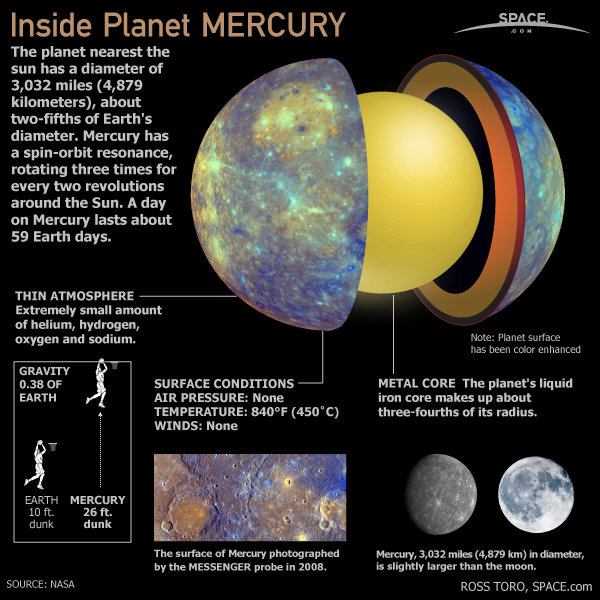The innermost planet of our solar system, Mercury, has been visible in the night sky for all of human history. Yet, being so difficult to observe due to its proximity to the Sun, the question remains – when exactly was the first definitive discovery of this world?
Despite clear recorded sightings thousands of years ago, the true nature of Mercury has puzzled astronomers for centuries. Its swift movement and occasional passages across the face of the Sun have inspired myths and symbolism across cultures.
However, it would take the birth of telescopic astronomy and mathematical prediction to finally reveal crucial details about Mercury. What were those key discoveries that allowed us to conclusively identify Mercury as a planet?
When was Mercury discovered? How did early scholars attempt to track its complex orbit before modern astronomy provided clearer data? The full story spans centuries of observation, theory, and innovation.
In this article, we aim to illuminate key facts surrounding the discovery of Mercury and discuss why confirmation of its planetary status proved so elusive across millennia.
When Was Mercury Discovered?
So, when was Mercury discovered, and who discovered Mercury? Mercury has been known since ancient times and was observed by various cultures. It is one of the five planets visible to the naked eye and can be seen without the aid of a telescope.
The ancient Greeks, Babylonians, and Egyptians were among the early civilizations that recorded observations of Mercury. The planet’s discovery is not attributed to a single individual, as it was visible in the night sky and did not require a telescope for recognition.
Therefore, it’s more accurate to say that Mercury was not discovered but rather observed throughout history by different civilizations.

Ancient times
Early observations and recognition
Babylonians’ role in tracking Mercury’s movements
The Babylonians tracked Mercury. They observed its movements across the sky and kept detailed records going back centuries. These records noted when and where Mercury was seen.
The Babylonians studied these records intently and looked for patterns over long periods. Tracking Mercury was important in their astrology system. They associated gods and myths with planets.
Greek perspectives on Mercury’s appearance and behavior
Same as the Babylonians, the Greeks watched the sky closely. They studied the wandering stars or “planets. Mercury’s fast speed impressed them. It seemed to dart back and forth.
The Greeks personified planets as gods and goddesses. For them, Mercury was Hermes, the messenger God known for speed and mobility. Hermes’ face graced their depictions of the planet.
Contributions from Egyptian astronomers in ancient observations
The Egyptians made key planetary observations, too. Their dark night skies and dry climate helped. As did their priesthood’s interest in astronomy.
They built massive structures aligned with celestial bodies. The pyramids reflected solar patterns. Egyptian records describe Mercury sightings. These aided Babylon and Greece.
Middle Ages
Evolving knowledge about Mercury
Islamic astronomers’ advancements in Mercury’s understanding
Islamic scholars inherited ancient records. They built the first observatories and tracked Mercury’s movements precisely. Al-Battani confirmed Mercury’s orbital period. Ibn al-Haytham studied its appearance. Islamic maps of Mercury advanced geography and math, too.
Islamic astronomy spread this knowledge widely. Their work heavily influenced Europe’s awakening and ushered in the Renaissance era.
Insights from European scholars during the Middle Ages
European astronomy stagnated after Rome’s fall. Only a few kept studying the heavens, including the English monk Bede. Bede carefully observed eclipses in the 700s AD. He helped keep Mercury sightings alive in Europe.
Though records remained sparse for centuries, the rediscovery of ancient texts rekindled interest. Medieval scholars translated Arabic and Greek works. This describes Mercury’s speed and phases.
Early Modern Period
Renaissance understanding of Mercury
Copernicus and the heliocentric model’s impact on Mercury
Copernicus proposed a radical vision in 1543. He put the Sun at the center of things. This shook the long held geocentric model’s grounds. His model simply and elegantly explained puzzles about planets.
Their odd looping paths made sense in a Sun-centered system. Mercury was no longer an oddball. This discovery changed the course of science and cemented Mercury’s true identity as a planet orbiting our star, not just an errant wanderer in Earth’s sky.

Kepler’s laws and their implications for Mercury’s orbit
Kepler built on Copernicus’ foundation in the early 1600s. His calculations unlocked how planets moved. The math matched real orbits beautifully. He described how Mercury speeds up when closer to the Sun and slows down when farther away.
Its non-circular path became understandable with Kepler’s laws. Quantifying orbits this way was crucial for later predictions. It enabled tracking Mercury’s transits across the Sun’s disk, too.
Galileo’s telescopic observations and their influence on Mercury’s study
Galileo first viewed Mercury through his telescope in 1610. He scrutinized its phases as it orbited the Sun. Just like the Moon’s familiar crescent shapes.
Seeing phases was strong proof it orbited the Sun and not Earth. Galileo noted Mercury grew six times larger at superior conjunction, too. This indicated its great distance from Earth compared to the Moon.
His evidence cemented Copernicus’ theory in many minds – bringing Mercury into focus as a planet rather than just a point of light.
19th Century and Beyond
Developments and discoveries
Contributions from astronomers in the 19th century
The 1800s saw great leaps in optics and photography. New telescopes peered at Mercury with unprecedented power. Schiaparelli mapped Mercury’s surface in the 1890s.
He named features after famous artists and authors – craters, mountains, valleys, and more. Mercury’s similarity to our Moon intrigued many. Its cratered face and barren plains were alien yet familiar.
Key findings and advancements in Mercury’s study during subsequent centuries
Space age technology opened new windows after 1950.
- Radar glimpses showed Mercury’s radius and rotation rate
- Mariner 10 flew by in 1974, scoping terrain missed by earlier viewing angles
- MESSENGER entered orbit around Mercury in 2011; its cameras and instruments have observed the inner world extensively
Revelations about the planet’s geology, magnetic field, and more continue today.
The future holds more exploration of this mercurial orb. BepiColombo arrives in 2025 to add continental-scale maps and mineral composition data. What surprises await further study of the Solar System’s innermost realm? The story continues.
Advancements in Mercury’s Study and Exploration
Subsequent studies and observations
Ongoing observations of Mercury’s behavior and characteristics
Mercury remains a challenging target for Earth-based telescopes. Steady monitoring continues using advanced optics and satellites. Tracking its irregular spins and orbital wobbles grows more precise each year.
New discoveries emerge frequently, like an impact blast plume seen in 2019 and unusual bright spots connected to magnetic anomalies. There is still much to learn. Even a planet so close can retain an air of mystery when glimpsed from afar, driving efforts to study Mercury from multiple vantage points.

Advancements in technology are influencing the study of Mercury
Digital photography has revolutionized astronomy. Image processing brings out subtle albedo patterns on Mercury, revealing new geology insights.
Light-weight materials and efficient ion drives now enable sending probes closer to the Sun, making Solar System exploration more accessible.
Evolution of knowledge about Mercury’s features and surface
Progress in understanding Mercury’s geology and physical features
Early terrain guesses gave way to reality with the arrival of space mission evidence. Mariner 10 first glimpsed scarps, smooth plains, and cratered highlands in detail.
MESSENGER found widespread volcanic deposits and more exotic landforms. Like strange hollows and double-ring impact basins. Current theories posit Mercury’s huge iron core and solar beatings shape its bizarre surface. Models still struggle to explain everything observed so far.
Notable discoveries in recent years regarding Mercury’s surface
One shock was seeing evidence of water ice in permanently shadowed polar craters. This was an unexpected discovery on the closest planet to the Sun.
More recently, the reflection of laser altimeter beams suggested graphite exists, potentially from carbonaceous meteors. This is a strange new substance for inner Solar System studies.
Space missions and probes targeting Mercury for exploration
Overview of significant space missions dedicated to Mercury
Only two spacecraft have closely visited Mercury so far. Mariner 10 performed several flybys in 1974-75, glimpsing under half the surface. Then, MESSENGER completed three flybys before entering orbit from 2011-2015 – fully mapping Mercury with cameras and scans at multiple wavelengths.
Key findings from space probes
These robotic geologists measured Mercury’s magnetic field strength, confirming the existence of its large molten core. Additionally, they unveiled extreme temperature swings in craters and the unexpected presence of ice.
Through mapping landforms, imaging faults and ridges, and detecting unique surface chemistry signatures, these missions significantly unraveled the secrets of the innermost world.
Contemporary Understanding of Mercury
Modern technologies and instruments
Overview of cutting-edge technologies used in Mercury research
Special telescopes can now nullify atmospheric distortion, giving ground images comparable to space. Light-weight materials enable flyby probes to approach the Sun closer without melting.
Planet mapping has reached new heights via LiDAR and SAR (synthetic aperture radar). Generating stunning 3D visualizations. Spectrometers analyze minerals precisely by ray frequencies.
Additional technologies like gravitational assist maneuvers and ion thrusters make visiting Mercury more feasible than ever before.

The role of advanced instruments in deciphering Mercury’s mysteries
Gamma-ray, X-ray, and ultraviolet scanners measure high energy emissions. Probing the planet’s interaction with the solar wind. Gravity field tests chart the core while magnetometers scan for magnetic anomalies.
These tools peel back layers literally and figuratively. Furthering insight into the strange world that is Mercury. With each instrument and mission, the picture grows more clear, yet mysteries remain to entice future exploration.
Current knowledge and ongoing research
Present understanding of Mercury
Now known as a small yet mighty orb with extreme heat swings, perplexing magnetic bubbles, and more water ice than expected, its huge iron core and charred complexion tell a story of planetary evolution close to an active star.
Much has been revealed, but much is still unknown about the innermost planet’s complex character. Mercury continues to surprise scientists, reminding us that even familiar cosmic neighbors can hold unexpected secrets.
Ongoing research projects and future prospects
BepiColombo is set to arrive in 2025, adding continental-scale mineral composition maps and magnetosphere measurements. A proposed joint mission between NASA and ESA aims to send an orbiter in the 2030s with additional instruments. It will globally analyze the surface and environment.
Truly getting to know this long-overlooked inner-world neighbor. Mercury keeps researchers racing to catch up as it sprints around the Sun.
Conclusion
We hope this journey through history has helped reveal when and how Mercury was discovered in the true sense. Definitively identifying and understanding any celestial object requires incremental steps over time.
Astronomers in different eras built on knowledge to unveil Mercury’s nature and behavior through patient tracking, technology improvements, and moments of sudden realization. When was Mercury discovered? Multiple breakthroughs over centuries crystallized proof of its planetary status and solar orbit.
This chronicle shows that pinning down when mercury was discovered defies a simple date, just as the planet itself defies a simplistic definition. But unpacking key events and advances illuminates the road to our current perception.
As instruments and space missions continue to uncover riches at our solar system’s frontier, more chapters in Mercury’s story surely await. What other shocking revelations hide under Mercury’s shrouded sunward face? The next chapter is just beginning.
